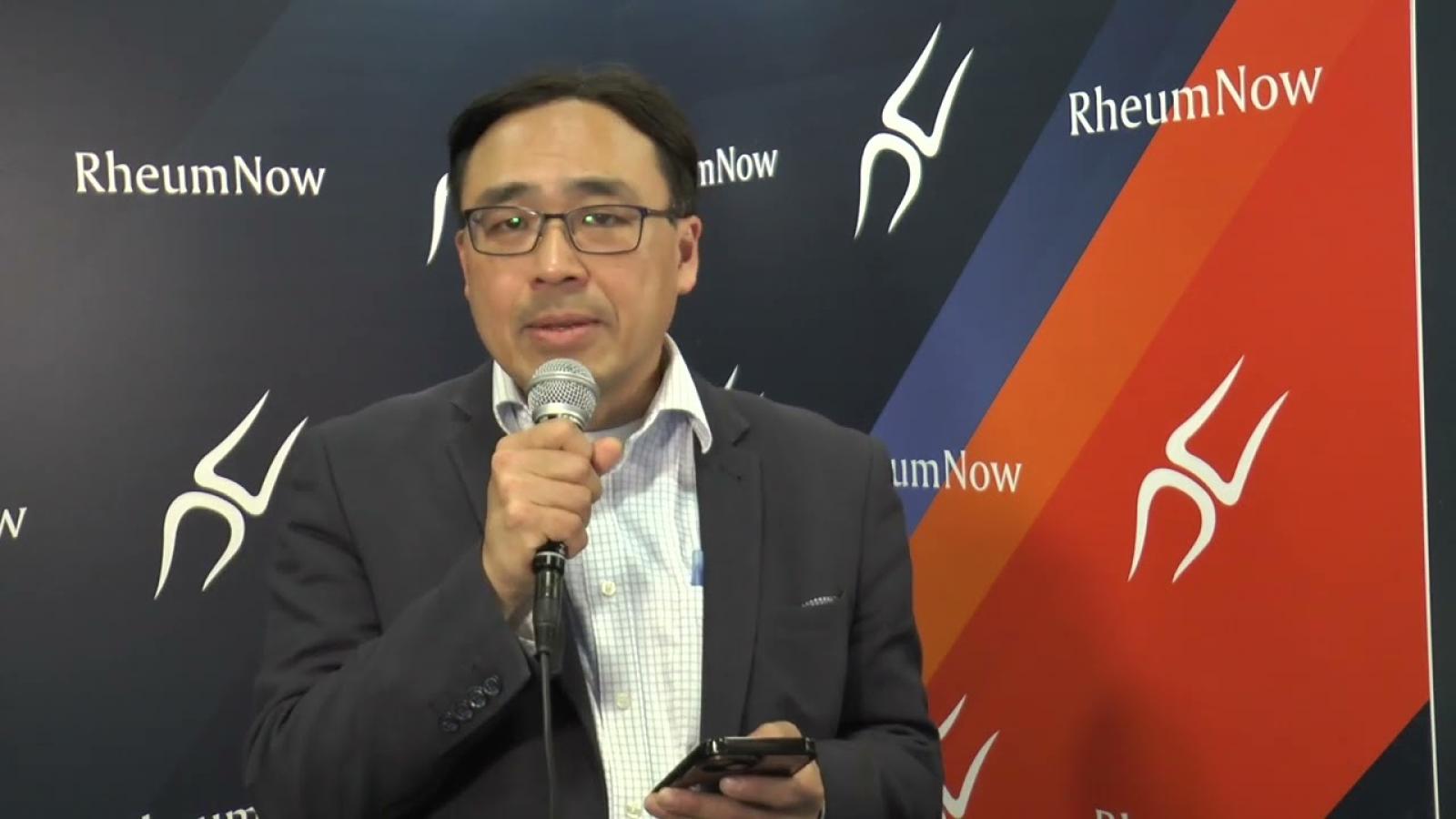Precision Immunotherapy in Axial SpA
Dr. Marina Magrey at the 2024 ACR Convergence meeting in Washington, DC.
Watch video →Nov 14-19, 2024
Dr. Marina Magrey at the 2024 ACR Convergence meeting in Washington, DC.
Watch video →Dr. Arthur Kavanaugh discusses abstracts 1709 and 1471, along with a related seminar, presented at the 2024 ACR Convergence meeting in Washington, DC.
Watch video →Dr. Lihi Eder discusses abstract 0603, presented at the 2024 ACR Convergence meeting in Washington, DC.
Watch video →Dr. Andrea Fava at the 2024 ACR Convergence meeting in Washington, DC.
Watch video →Different factors are known to influence disease characteristics and outcomes in psoriatic arthritis (PsA).
Read more →Dr. Jiha Lee talks with Dr. Shannon Herndon about abstracts 0204 and 1064, presented at the 2024 ACR Convergence meeting in Washington, DC.
Watch video →Dr. Mike Putman reports on abstract 2527, Efficacy and Safety of Nipocalimab, an Anti-FcRn Monoclonal Antibody, in Primary Sjogren’s Disease: Results from a Phase 2, Multicenter, Randomized, Placebo-Controlled, Double-Blind Study (DAHLIAS), presented at the 2024 ACR Convergence meeting in Washington, DC.
Watch video →For decades, glucocorticoids (GCs) have formed the backbone of polymyalgia rheumatica (PMR) management.
Read more →Dr. Jonathan Kay interviews Dr. John Isaacs about abstract 1349, presented at the 2024 ACR Convergence meeting in Washington, DC.
Watch video →The findings from ORAL Surveillance Study have been a dominant conversation at recent ACR Convergence, with the seminal findings and subsequent analyses a target of debate. Subsequent post-hoc analyses, follow-up studies, and claims data analyses have been used to further interpret the data, though a clear answer on safety is not certain. A study presented on Sunday reported on a new post-hoc analysis that provides new insights.
Read more →Dr. Janet Pope discusses abstract 0678, Patients with Interstitial Lung Disease Due to Systemic Sclerosis or Rheumatoid Arthritis Need Monitoring More Frequently Than Annually, and abstract 0706, Single Center Prospective Cohort of Systemic Sclerosis Patients Who Are At-Risk for Pulmonary Hypertension, presented at the 2024 ACR Convergence meeting in Washington, DC.
Watch video →Dr. Catherine Bakewell shared key takeaways from a session presented Sunday morning by Dr. Laura Coates and Dr. Lihi Eder, as well as abstract 1709, presented at the 2024 ACR Convergence meeting in Washington, DC. 1709
Watch video →Bimekizumab (BKZ) is a monoclonal IgG1 antibody that selectively inhibits interleukin (IL)‑17A and F. There have been more updates on the 2 year data on BKZ at #ACR24, and this is a summary of four studies being presented this year at ACR24.
Read more →A recent study by Sparks et al reveals evolving trends in DMARD usage for rheumatoid arthritis over two decades in the United States. This retrospective analysis evaluated 407,728 DMARD initiation episodes among 229,365 unique patients from 2001 to 2021.
Read more →When the ACR Convergence 2024 abstract site went live, the first query I typed into the search bar was, “CAR-T.” I consider myself a CAR-T skeptic and would be surprised if the magical results from this NEJM case series replicate at scale, but it seems likely that CAR-T will revolutionize the care for (some) patients with rheumatic diseases.
Read more →Dr. Antoni Chan discusses abstract 2328, presented at the 2024 ACR Convergence meeting in Washington, DC.
Watch video →Dr. Andrea Fava discusses plenary abstract 1642, presented at the 2024 ACR Convergence meeting in Washington, DC.
Watch video →Sleep plays a critical role in regulating inflammation and overall health. In rheumatic diseases like lupus and rheumatoid arthritis (RA), disrupted sleep is common and can exacerbate symptoms and disease progression. Experts Dr. Al Kim, Patty Katz, and Dr. Yvonne Lee emphasized the importance of addressing sleep disturbances in these conditions.
Read more →




By downloading this material, I acknowledge that it may be used only for personal use and personal education and that I will accredit RheumNow.com as the source and owner of this material. Commercial use or mass reproduction of this material without permission from RheumNow (info@rheumnow.com) is prohibited.